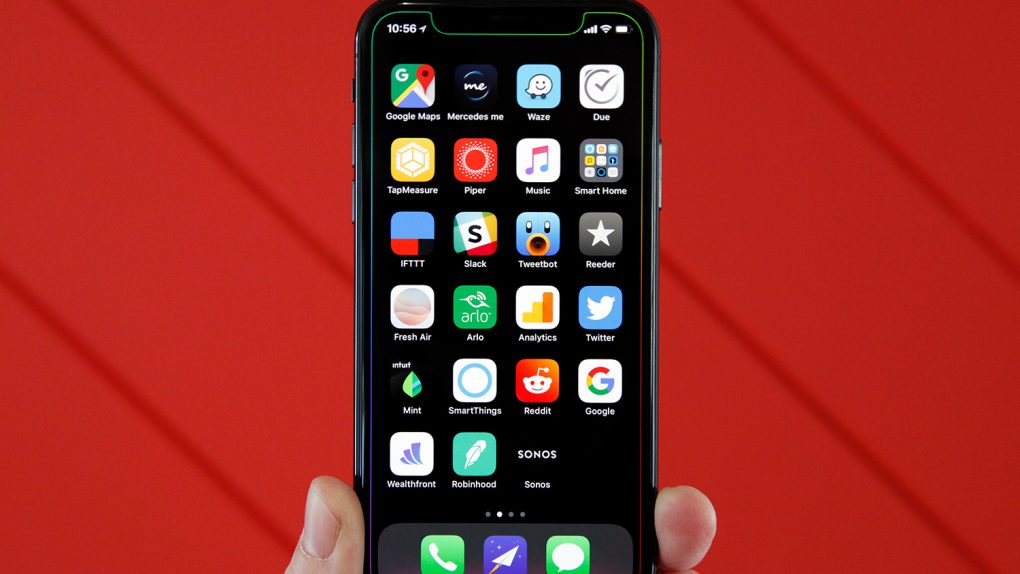Google I/O 2018 has been the biggest story of the week since Google’s big keynote address on Tuesday, and the company announced so many exciting things that are coming down the pipe. Email replies that write themselves, photos that retouch themselves, and a Google Assistant that makes phone calls on your behalf are just some of the incredible things Google showed off this week at its big annual developer conference. Personally, I was blown away by much of what Google showed off at this year’s Google I/O keynote, and I can’t wait to get my hands on all the updated apps and services Google unveiled. But while all this has been going on, I’ve also gotten constant reminders this week that illustrate why I would never switch to Android from the iPhone.
Android is the world’s most popular mobile platform by a landslide, and it has made great strides over the years where user experience is concerned. Android P in particular is a huge update, and what I’ve seen so far looks quite impressive. But there are still so many important ways that iOS and the iPhone offer a vastly superior experience, and yet another serious Android problem reemerged this week to remind me once again that I’m sticking with Apple’s iPhone for the long haul.
Before we dive into this new report, let’s quickly recap what we have already covered this week. At the highest level, I continue to choose iOS over Android because I find the overall quality of the iPhone user experience to be immeasurably better than Android. Apple’s iPhone hardware is in a league of its own. Of that, there is no question. The majority of Android phone makers don’t even bother to design their own phones anymore, they just blatantly copy Apple’s iPhone designs instead.
On the software side of things, Apple still has a number of big advantages. Even when considering all of the bugs and other issues that have existed in iOS 11 since its release last summer, iOS is still so much smoother and more fluid than Android. This is true of big things, but it’s also all the little things that make a huge difference. Seriously, why can’t Google figure out the physics of scrolling on a smartphone?!?
The all-important app experience and third-party app ecosystem are also check marks in the iPhone column. The user experience with iOS is so much simpler, smoother, and more consistent than it is on Android.
Then we come to the topics covered earlier this week, which all focused on security. Apple’s “walled garden” model involves much tighter constraints on third-party developers and a much more stringent app review process. Apple also imposes tight restrictions on which core OS features third-party apps can access. Those two reasons explain why the nightmare Android malware discovered earlier this week could never exist on an iPhone. We also got two different reminders this week that Apple continues to focus on user security, constantly finding new ways to protect user data not just from hackers, but also from law enforcement and intelligence agencies that continue to use questionable methods to break into citizens’ devices.
Now that we’re up to speed, let’s look at one last report that popped up this week to remind me and other iPhone users of why we’re not jumping ship to Android anytime soon.
A new post on Symantec’s Threat Intelligence blog sheds light on something that should be very troubling to Android users. The idea of malware sneaking through Google’s lax app store policies is nothing new, but Symantec found something particularly troubling. Multiple apps that have previously been identified as malware and removed from the Google Play store managed to find their way back to Google’s Android app store. What sophisticated trickery did the malicious developer in question use to get the apps back on the Play store? He or she changed the apps’ names. Seriously, that’s it.
“A set of apps [has] managed to reappear in the Play store even after we alerted Google and the original app was removed,” Symantec’s Shaun Aimoto wrote. “The same code was published on Google Play with a slightly different name under a new publisher.”
He continued, “This malware (Android.Reputation.1) appears on the Play Store hidden in at least seven apps in the U.S. offering fun, useful, and sometimes insidious features. These include emoji keyboard additions, space cleaners, calculators, app lockers, and call recorders. None of the samples we analyzed actually functioned as advertised on their Google Play pages. Once the app is installed, it takes various measures to stay on the device, disappear, and erase its tracks.”
It really shouldn’t be this easy to distribute malware through Google’s own Android app store, but alas. This isn’t something that would ever happen on Apple’s iOS App Store because the company has a much more thorough application review process in place to weed these things out. There are plenty of things about Google’s mobile platform that are terrific, and there are some great advantages the platform has over iOS. But as we’ve been reminded of time and time again this week alone, any advantages are offset by the problems that continue to plague Google’s mobile platform.








